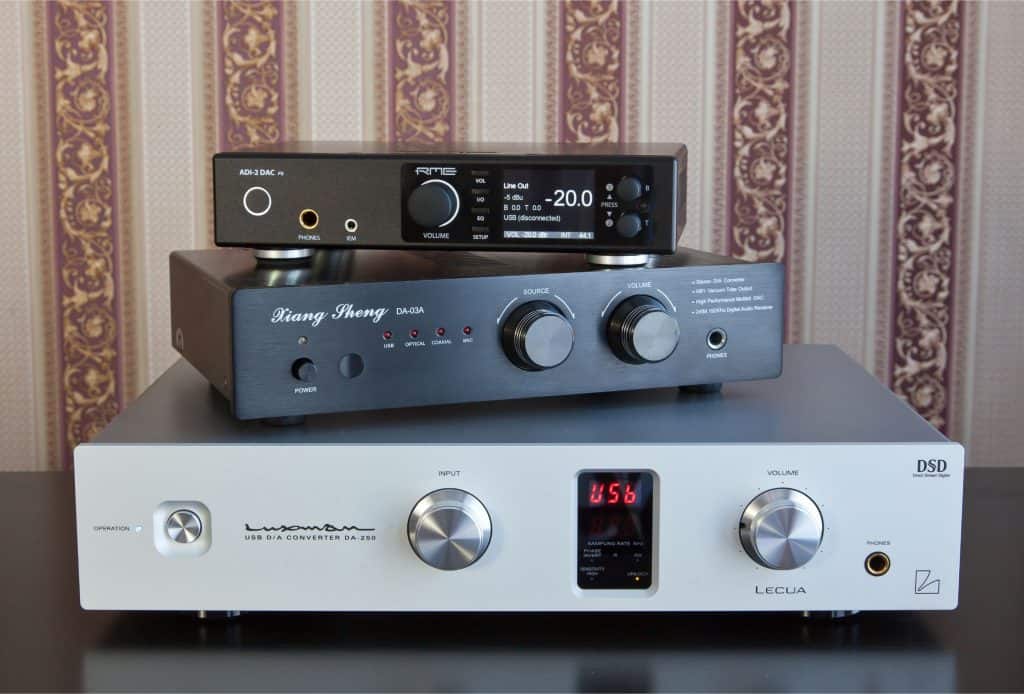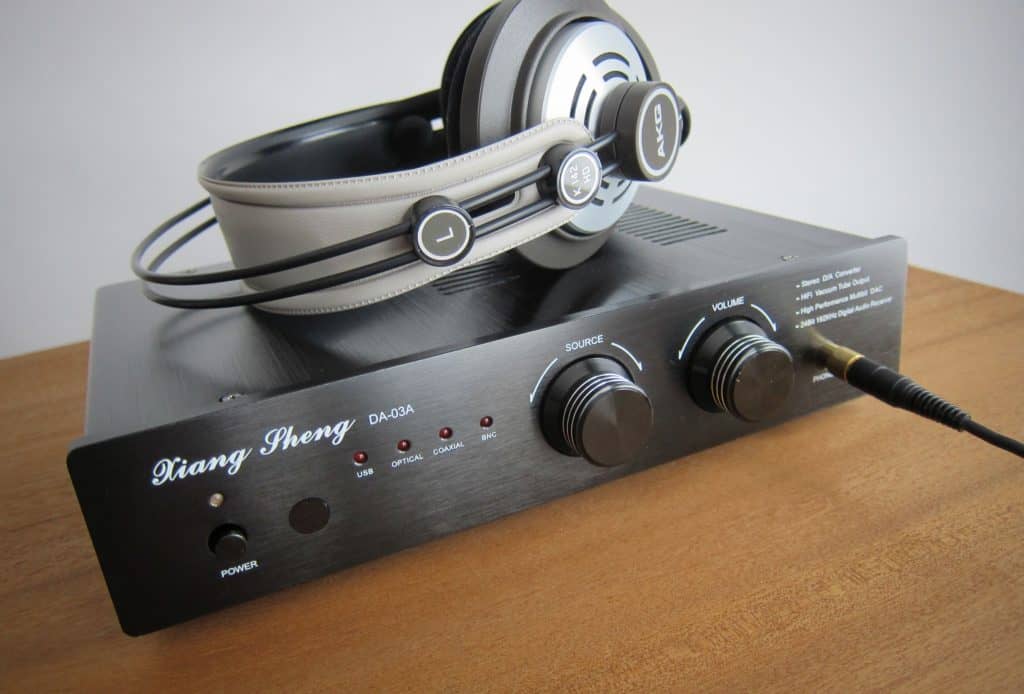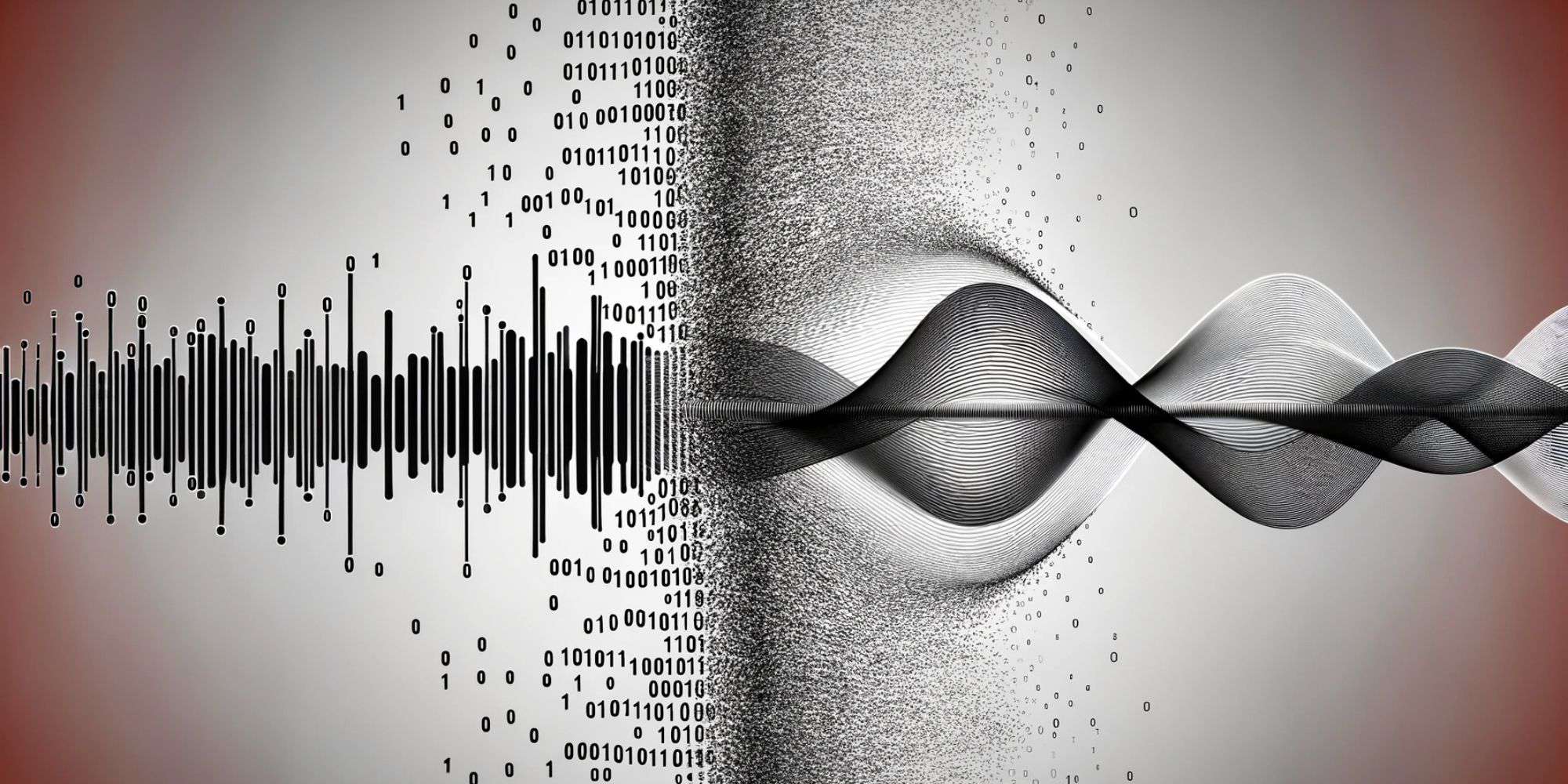Among audiophiles, the digital-to-analog converter (DAC) is a common topic of discussion. A DAC is the technology responsible for converting digital audio, which is composed of binary 1s and 0s, into analog signals that our ears can comprehend as sound.
Without a DAC, digital music stored on CDs, smartphones, and other digital devices would remain inaccessible to human ears. As these signals are what ultimately drive your headphones or speakers, the quality of a DAC significantly influences the listening experience.
The importance of a DAC extends across various audio systems, from modest personal devices to sophisticated home setups. With a variety of DACs available, each boasting different strengths and capabilities, the impact on audio quality can vary.
While the internal DACs built into most consumer devices are sufficient for casual listening, avid audiophiles often seek external DACs that promise to enhance detail, reduce distortion, and expand dynamic range. The synergy between a DAC and an amplifier is also crucial; a high-quality DAC can be undermined by a subpar amplifier, and vice versa.
Key Takeaways
- A DAC transforms digital audio into analog signals to make it audible.
- The performance of a DAC will affect audio quality.
- While low-quality DACs are audibly inferior, differences between a mid-range and high-end DAC may be unnoticeable during blind testing

Do DACs actually make a difference or are they snake oil?
The debate over whether digital-to-analog converters (DACs) make a significant difference in audio quality is ongoing.
Some argue that expensive external DACs are not snake oil and produce measurably superior audio by reducing interference and providing better technical specifications.
However, others would argue that the difference in audio quality between different DACs may not be perceptible or are barely perceptible. This is especially true when comparing a $100 DAC to a $1000 DAC, as there are fairly significant diminishing returns on investment.
In general, DACs are recognized as an essential component of audio systems, as they are necessary for playing digital audio through analog audio equipment. However, they rank behind the transducer (speakers/headphones) and amplifier when it comes to how much difference they can potentially make.
Understanding Digital Audio
Digital audio is a representation of sound recorded in, or converted into, digital form. In this form, the sound is encoded as numerical samples in a continuous sequence. Understanding digital audio involves grasping the basics of digital signals and exploring different audio file formats and their level of compression.
Digital Signal Basics
A digital signal in the context of audio refers to a series of numerical values representing the original analog sound wave. These values capture the amplitude of the sound wave at specific intervals of time, known as the sampling rate. For instance, a CD (Compact Disc) standard sample rate is 44.1 kHz, which means that the audio is sampled 44,100 times per second. Digital signals offer the advantage of less susceptibility to interference and noise over analog signals.
File Formats used for digital audio can preserve these signals in different ways. For example:
- MP3: A common compressed format that reduces file size by removing frequencies not easily heard by humans.
- WAV: An uncompressed format that retains all audio data but results in larger file size compared to MP3.
- FLAC (Free Lossless Audio Codec): Compresses audio without losing any data, striking a balance between file size and sound quality.
- ALAC (Apple Lossless Audio Codec): Similar to FLAC, an Apple-developed format providing lossless compression.
- DSD (Direct Stream Digital): Uses a different method of encoding to store audio signals at a very high sample rate, used for Super Audio CDs.
File Formats and Compression
File formats can be broadly classified into two main types based on their approach to compression:
- Lossy Compression:
- Significant reduction in file size.
- Example: MP3, which selectively discards audio information.
- Lossless Compression:
- Reduces file size without losing audio fidelity.
- Example: FLAC and ALAC, both preserve the entire range of audio data.
Compression affects the quality and size of the digital audio file. Lossy compressed files are more manageable for storage and streaming but can result in degraded audio quality. In contrast, lossless compressed files maintain the quality at the expense of larger file sizes. Uncompressed formats like WAV represent the audio waveforms in their purest form, offering the highest sound fidelity at the cost of substantial space.
Navigating the landscape of digital audio includes choosing the right formats and understanding the underlying principles of digital sound signals. These choices impact the listening experience, storage requirements, and audio quality.

The Role of a DAC in Audio Playback
In the context of audio playback, a Digital-to-Analog Converter (DAC) is crucial as it precisely translates digital audio files from a digital source into analog signals that can be heard through speakers or headphones. This process impacts the fidelity and quality of the listening experience.
Internal vs. External DACs
Internal DACs (a.k.a. built-in DACs) are integrated into devices such as smartphones, computers, and media players. While convenient, they are often limited by the device’s design constraints, potentially affecting audio performance due to electronic noise and space limitations.
In contrast, external DACs are standalone units dedicated solely to converting digital audio signals with typically higher-quality components that can reduce signal noise and distortion, offering purer audio reproduction.
From Digital to Analog: How DACs Work
When audio is played back, the internal or external DAC reads the digital data, which comprises a series of zeros and ones, and converts it into an analog signal. This signal then feeds into an amplifier before being sent to the output, such as headphones or speakers. The conversion process is delicate and nuanced; a higher-quality DAC will handle this process more accurately, preserving the nuances of the audio and providing a clearer, more dynamic listening experience.
Factors Influencing DAC Performance
The performance of a digital-to-analog converter (DAC) is measured by how accurately it can reproduce an analog signal from digital data. Critical factors include the processing of digital files through sampling rates and bit depth, the minimization of jitter due to clock precision, and the quality of DAC chips and overall circuitry. These elements are pivotal in determining the DAC’s ability to deliver clear and precise audio without artifacts.
Sampling Rate and Bit Depth
The sampling rate and bit depth significantly influence DAC performance by determining the resolution of sound playback. A higher sampling rate means the audio signal is captured more frequently, leading to a more accurate representation of the sound. Common rates include 44.1 kHz, used for CDs, and higher resolutions like 96 kHz or even 192 kHz, which can capture greater detail. Bit depth affects dynamics, with 16-bit being standard for CDs while 24-bit offers a more dynamic range.
Jitter and Clock Accuracy
Jitter refers to the timing inconsistencies in the digital signal’s conversion process, caused by variations in the DAC’s clock. This can lead to audio artifacts and degradation in sound quality. Accurate clocking mechanisms within the DAC mitigate jitter, with a precision clock leading to a more faithful audio reproduction. Efficient filters can also reduce jitter impact by smoothing out these timing irregularities.
DAC Chips and Circuitry
The heart of a DAC is its chip, which plays a critical role in converting digital audio signals into analog. Different DAC chips vary in architectural designs and sound characteristics. Circuitry surrounding the DAC chip, including op-amps, and power supply quality, also affects sound reproduction. Good circuit design can minimize noise and ensure accuracy in the analog signal by efficiently managing the power and signal path through the DAC.
Do DACs Color The Sound?
In the purest sense, DACs are not supposed to color the sound. The goal of high-fidelity audio reproduction is to be as true to the original recording as possible, and the ideal DAC is one that serves as a transparent bridge between digital files and analog sound.
However, the reality is nuanced. Variations in design, implementation, and personal preference mean that some level of coloration is almost inevitable, though often minimal and possibly desirable. It’s usually coloration resulting from tube amps, not DACs, that is much more widely discussed.
DACs in Different Audio Systems
Digital-to-Analog Converters (DACs) are integral to any digital audio system as they convert digital signals into analog sound waves. The quality of a DAC can significantly affect the sound output across various audio setups.
Headphone Setups
In headphone systems, a DAC’s function is to provide a detailed and clear audio signal to the headphones. Often, high-end headphones benefit from a dedicated external DAC, as it bypasses the typically lower-quality internal DACs found in many devices. Such an upgrade can result in a more accurate soundstage and a richer listening experience.
Hi-Fi and Home Audio Systems
For a Hi-Fi or home audio system, incorporating a standalone DAC can dramatically enhance the system’s overall fidelity and precision. Most Hi-Fi systems include an integrated DAC within the amplifier, but audiophiles may opt for a separate DAC to gain a perceived improvement in clarity and detail, especially when used with high-resolution audio files.
Portable Music Players
Portable music players frequently have a built-in DAC; however, its quality varies. Some high-end portable players come with advanced DACs that rival standalone units, providing listeners with exceptional sound quality even on the go. Those using smartphones or basic MP3 players for their music may consider a portable DAC as an effective upgrade to their listening experience.
Amplification and Its Relationship with DACs
Amplification is essential in translating low-level audio signals into sounds at a volume suitable for listening. The synergy between digital-to-analog converters (DACs) and amplifiers is critical for high-quality audio reproduction.
Understanding Amplifiers
An amplifier serves a crucial function in any audio playback system. It takes the low-level audio signal output from a source device and increases its power. This process is necessary for driving speakers or headphones so they can produce sound at audible levels. In the context of personal audio, a headphone amp specifically increases the signal’s power enough to drive headphone speakers, which is vital for achieving high fidelity sound in personal listening scenarios.
Combining DACs and Amps
Combining a DAC with an amplifier provides an efficient audio pathway from a digital audio source to your ears. The DAC converts digital audio from ones and zeroes into an analog signal, which is then fed into the amplifier. The importance of this relationship can’t be understated, as a DAC alone cannot drive headphones or speakers without the subsequent boost from an amp. It is the harmonious operation of both the DAC and the headphone amplifier that creates the full sound experience, fulfilling the potential of high-resolution audio sources.
Selecting the Right DAC
When one decides to enhance their listening experience, considering a DAC upgrade is pivotal. Choosing the right digital-to-analog converter (DAC) hinges on understanding both the audio source needs and the technical specifications that align with individual preferences for sound quality and convenience.
Identifying Your Audio Source Needs
Before selecting a DAC, it is important to determine the type of audio sources it will serve. Devices like smartphones, computers, or dedicated high-fidelity setups have differing demands.
For instance, if a user primarily streams music from Spotify, they must ensure the DAC supports optimal codecs to improve streaming sound quality.
DAC Specifications to Consider
When sifting through DAC specifications, there are pivotal aspects to consider that impact sound quality and convenience:
- Resolution: Look for DACs that can handle high-resolution files, especially if the aim is to play lossless audio formats.
- Signal to Noise Ratio (SNR): A higher SNR means a cleaner sound with less background noise.
- Connectivity Options: Ensure the DAC offers the required connections for your devices, whether USB, optical, or coaxial.
- Portability: For listeners on the go, a DAC with compact design and low power requirements can provide a balance between sound quality and convenience.
Compatibility and user-friendliness also play a role in the decision-making process. While audiophiles may prioritize sonic fidelity, casual listeners might value a plug-and-play DAC that seamlessly integrates into their existing setup.
DAC Brands and Models
Digital-to-Analog Converters, or DACs, come in a diverse range of brands and models, each offering unique features and quality levels to cater to the varied needs of audiophiles and casual listeners alike. Selecting the right DAC can greatly enhance the listening experience by providing clearer, more accurate sound.
High-End DAC Options
When it comes to high-end DACs, options like the Chord Qutest stand out for their exceptional build and sound quality. Chord Electronics has built a reputation for crafting DACs with outstanding attention to detail, both in design and audio reproduction. The Qutest, in particular, is renowned for its ability to deliver a precise and detailed soundstage, making it a favorite among discerning audio enthusiasts.
iFi is another notable brand that produces premium DACs. Models like the iFi Zen DAC V2 strike a balance between high-quality sound and innovative features such as their proprietary PowerMatch and TrueBass enhancements, which allow users to tailor the listening experience to their preferences.
Budget-Friendly Choices
For those seeking more budget-friendly choices, the Cambridge Audio DACMagic 200M is a compelling option. Despite its more accessible price point, the DACMagic 200M provides an impressive array of features, including compatibility with high-resolution audio formats and Bluetooth functionality. The device is designed to upgrade digital sound from various sources without breaking the bank.
iFi’s range also includes more affordable models that deliver robust performance without a hefty price tag. The iFi Zen DAC V2, for example, while still keeping a foot in the high-end door, manages to stay relatively affordable, offering a clear, rich sound and a sleek design that appeals to both entry-level and experienced users.
By understanding the offerings from different brands and the capabilities of specific models, audiophiles can make an informed decision that matches their audio preferences and budget. Whether opting for a model from Chord’s boutique range or seeking value with Cambridge Audio or iFi’s versatile DACs, the right choice can significantly improve the quality of digital audio in any setup.
The Impact of DACs on Listening Experience
Digital-to-analog converters (DACs) play a crucial role in the quality of audio that listeners experience. When it comes to sound quality, a DAC is responsible for translating the binary codes of digital audio into soundwaves that we can hear.
Dynamic range is a critical aspect of the listening experience. It’s the contrast between the softest and loudest sounds a system can produce. A high-quality DAC can reproduce a wider dynamic range, allowing for a richer and more detailed sound. This means the subtleties in music, like the gentle brush of a cymbal or the deep resonance of a bass guitar, are more accurately captured and conveyed to listeners.
The amplitude of these soundwaves, which relates to their loudness, is also managed better by a superior DAC. A proper DAC ensures that the loudness levels are maintained accurately throughout playback, avoiding distortion at high volumes and preserving clarity at low volumes.
Here’s how a DAC impacts various components of the audio playback process:
- Translates digital to analog: A mandatory step for audio playback on analog devices.
- Preserves sound integrity: A high-quality DAC minimizes data loss during conversion.
- Enhances detail and clarity: Improved resolution of audio details for purer sound.
Listening through a device with a subpar DAC often results in a flattened audio experience. A good DAC preserves the integrity of the original recording, enhancing the listening experience by maintaining the fullness and depth of live sound. Consequently, investing in a dedicated DAC can be a significant upgrade for audiophiles and casual listeners alike, especially in setups where the existing DAC component is of lower quality.

